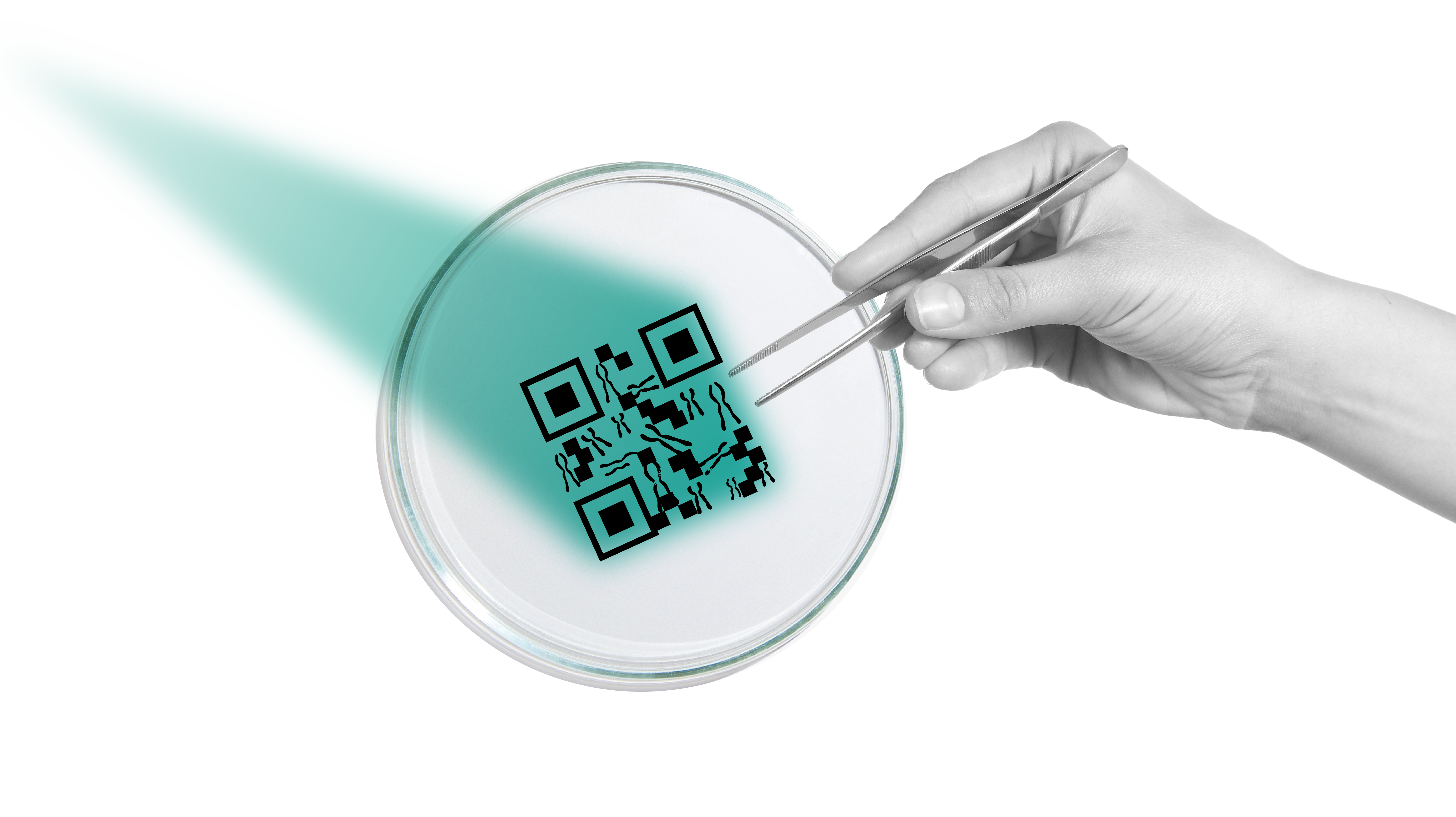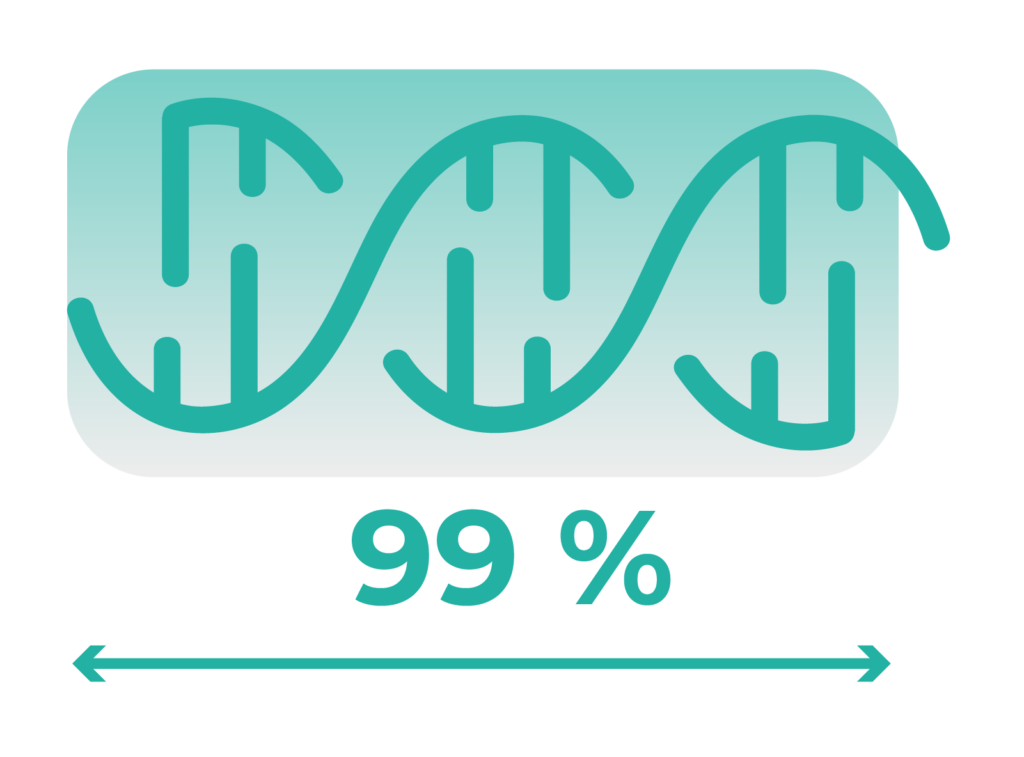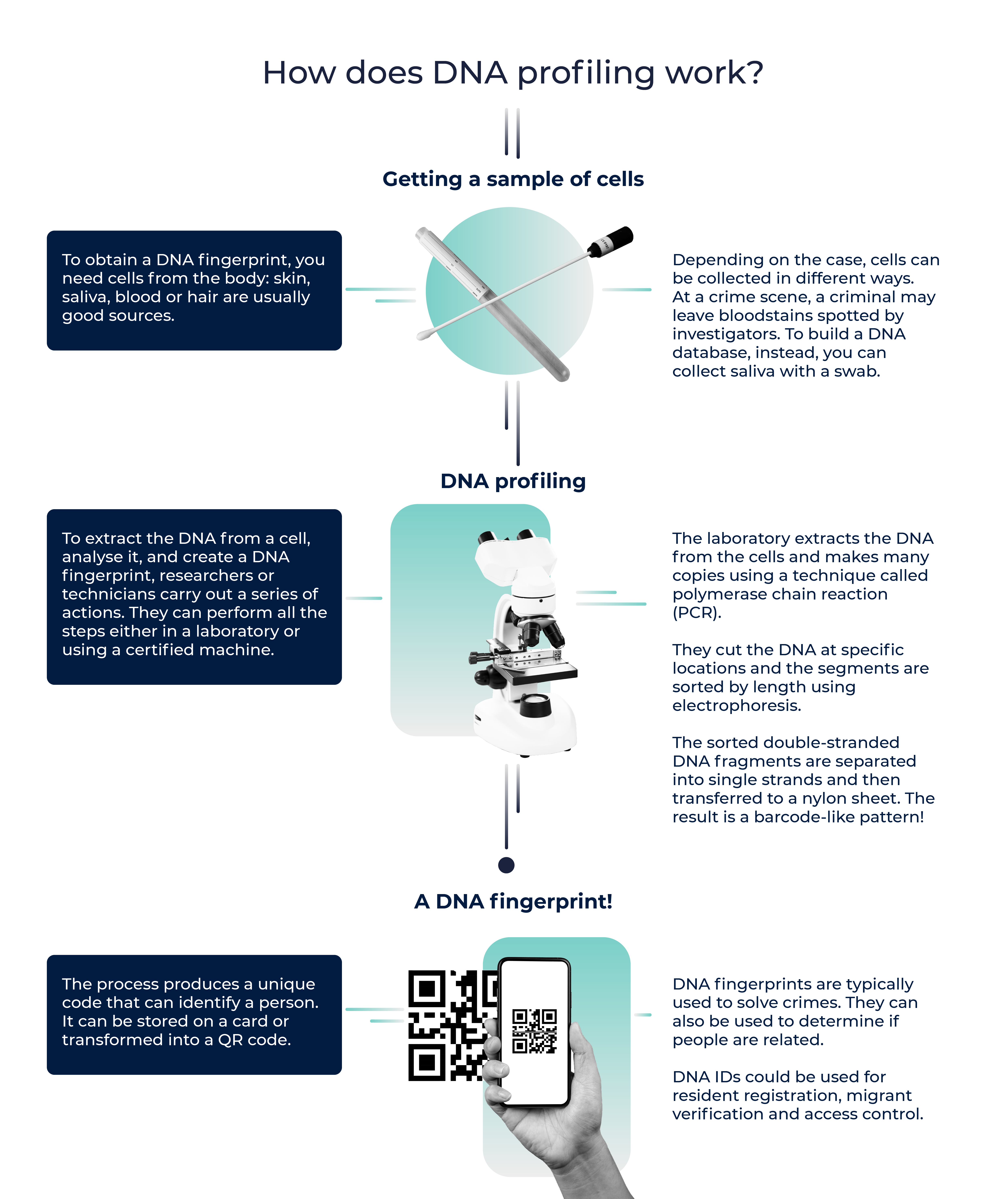Entering the era of DNA IDs: Will DNA become an integral part of our personal identity documents?

Since 1986, DNA has revolutionised criminal investigations, arresting killers and clearing the innocent. However, even though DNA fingerprints has helped to identify criminals, they do not contain any real personal information, such as race or height. For this reason, experts consider using them as DNA IDs in government databases for registration, verification, and access control.
Noncoding DNA

The portion of DNA used for profiling is a noncoding area. It means that it does not provide instructions nor store information to accurately identify a person. 99 % of our DNA is noncoding.
DNA fingerprinting: an accidental discovery
It was 1984 when geneticist Alec Jeffreys made a rather unintentional discovery at the University of Leicester. At the time, he was studying how hereditary diseases are transmitted between families. In order to analyse the DNA samples, Jeffreys came up with the idea of creating a kind of X-ray image of a particular section of DNA.
He attached the DNA strands to photographic film and left them to develop. When the scientist removed the film from the developing tank, he was surprised to see the result: an odd arrangement of lines of different lengths, like a barcode.
Each person involved in the experiment had a different pattern, inherited from the mother and father. The barcode could thus be used to accurately identify a person, like a fingerprint, and to establish kinship. And thus the name for this new technology has been formed: DNA fingerprinting – now known also as DNA profiling.
Forensic DNA databases
A DNA database is a government database containing the DNA fingerprints of convicted criminals. The first government database was set up by the United Kingdom in April 1995. In the United States, the FBI’s National DNA Database contains the DNA profiles of almost 18 million people who have been arrested or convicted of crimes.
How DNA evidence is used at the crime scene
DNA evidence has been increasingly used by law enforcement. More than 50 million people have had their DNA tested during criminal investigations, perhaps millions of criminals have been brought to justice, while innocent prisoners have been freed after being exonerated by DNA fingerprints.
Although DNA fingerprints can’t always exactly tell you who committed a crime, they can be used to narrow down a list of suspects based on how well their DNA matches samples found at a crime scene.


What part of DNA is used to obtain a DNA fingerprint?
- DNA is the molecule inside cells that contains the genetic information responsible for the development and function of an organism.
- Only about 1% of DNA is made up of coding genes; the other 99 percent – called non-coding DNA – does not give instructions or store personal information about the organism. They are like sentences made up of random letters: they have no real content or meaning.
- Within non-coding DNA there are short repetitive sequences: they are called minisatellites or STRs. These repeats vary from person to person: no two people, apart from identical twins, have the same pattern of minisatellites – they are perfect for creating a unique code!
- DNA profiling only looks at these repeats. By measuring repeats in different areas of the minisatellites – typically from 6 to 27 – you can create a unique code for an individual. This code is the DNA fingerprint. It is a bit like measuring several different parts of the human body, taking all the resulting numbers and making a code out of them.
The future of DNA fingerprinting beyond criminal investigation
DNA fingerprint is simply a code created by measuring specific sequence repeats in a noncoding region of DNA. It is information without meaning, like a sentence made up of random letters.
This is why, contrary to popular belief, DNA fingerprints are an extremely anonymous biometric: the sequence of numbers cannot be used in any way to identify a person’s characteristics, such as ethnicity, height or hair colour.
In addition to anonymity, DNA fingerprints do not change over a lifetime, they cannot be manipulated because the source is safely protected in body cells, and they have a minimum storage size. Combined with biometric data – such as retina or traditional fingerprints – DNA fingerprints can be included in the civil register and used in a number of circumstances: newborn registration, personal identification and border control; but also for the identification of the dead in the event of a natural disaster or in the case of a claimed relationship.
Is this the beginning of a new era for DNA fingerprints, beyond the crime scene?
DNA ID for governmental services and other civilian applications
Advanced biometric identity techniques were previously confined to sophisticated laboratories and fields such as forensics. Today, innovative identification solutions are taking the technology to a new level of application.
One example is VeriDNA, delivered by the German company Veridos, a pioneer in the field of DNA analysis for verification purposes.
VeriDNA is an automated solution: after taking a swab sample, the technology automatically generates a DNA ID using embedded RDNA technology. The DNA ID is then securely transferred to the database. This DNA fingerprint can then be recorded in national ID registers and integrated into a smart personal identity document.

DNA IDs are a perfect fit for civilian use: compared to traditional biometrics, they have the highest precision, the lowest mutability, and the smallest data storage volume. Because they consist only of a unique but impersonal sequence of numbers, DNA IDs ensure maximum privacy and anonymity. Therefore, DNA IDs could be the next big step in identifying and verifying individuals in civilian applications, complementing established biometrics such as fingerprints, iris scans or facial recognition:
• Secure border crossing in case of doubt
• Clarify relationships between people
• Guarantee reliable elections
• Register accurately sensitive groups of people such as newborns, foreign workers or prisoners
• Prevent identity theft through unique personal identification
AUTHOR: Giovanni Blandino
PHOTOS: Shutterstock








